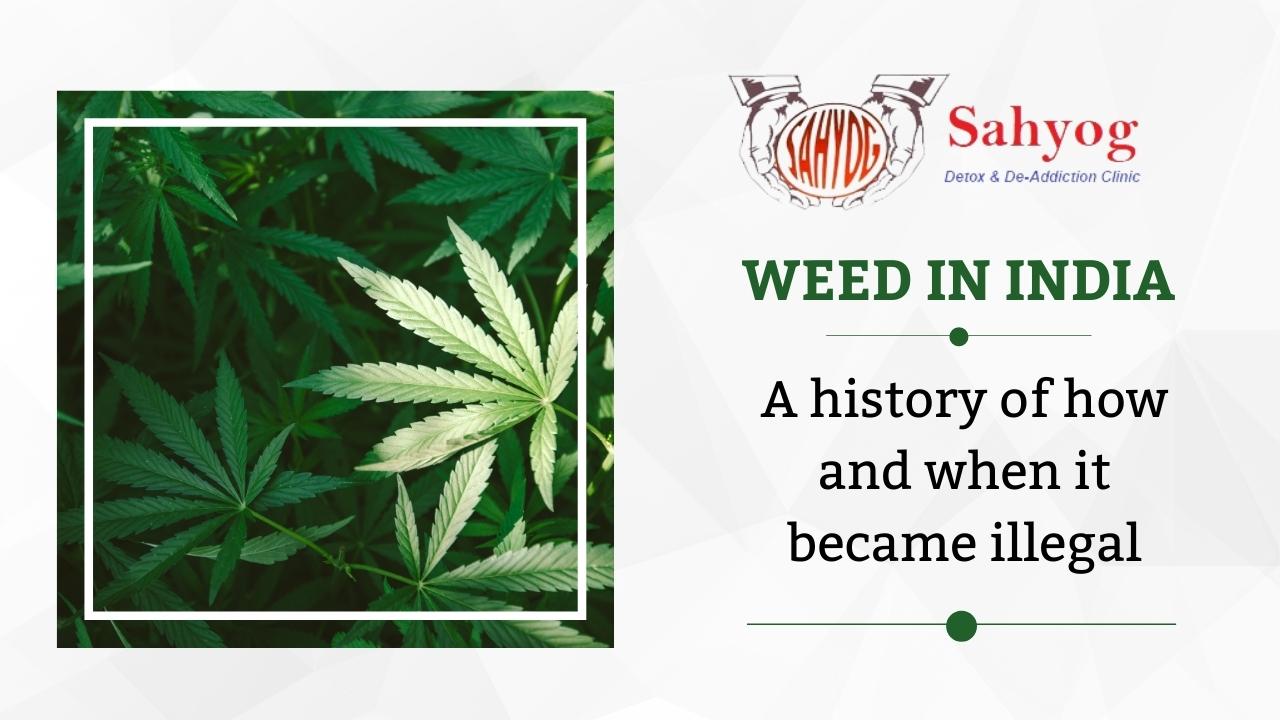Weed in India: A history of how and when it became illegal
Whether you love or hate weed, we can all agree that it’s way more popular than ever these days. As more states legalize weed for medicinal and recreational use, people have begun to wonder about the history of weed in India — what made it illegal, when was it banned and why? If you’re interested in reading the facts about weed in India or are looking to enlighten someone who doesn’t know much about this vice, read on to learn more!
It’s known that the cultivation of cannabis and its usage as an intoxicant has been prevalent in India since the time of the Vedas and Mahabharata. Even today, cannabis use has remained widespread, despite many efforts by the government to curb it. Read on to know more about the history of weed in India, including its illegalization and the reasons behind it.
Social Acceptance of Weed in India
The legalization of marijuana has to begin with social acceptance. In a country like ours, where taboos are still prevalent, social acceptance will be paramount for any change to take place. The first step towards legalization will have to be greater knowledge about marijuana. Only then will people begin to understand that what they have been told so far is mostly false propaganda by right-wing conservatives.
With increased awareness about marijuana, comes increased use. More use means more tax revenue for our government and less cost on our legal system as there would be fewer cases related to drug abuse/drug trafficking. (2) Research: Once social acceptance has been achieved, research can begin on whether legalizing weed is actually beneficial for our country’s economy. We should look at countries like Canada, Netherlands, and Portugal which have legalized marijuana. We need to study their successes and failures before we decide whether to legalize here. It might turn out that legalization doesn’t benefit us after all; but if we don’t even try to find out, we will never know. (3) Regulation: If we do decide to legalize weed, regulation will be essential for minimizing its negative effects on society.
Botanical Classification of Weed in India
Cannabis is a highly variable plant, with many varieties. It is an annual herbaceous plant that grows to a height of 1.5 to 6 feet (1.83 m) and has hairy leaves that are palmates compound or digitate, with serrate leaflets. The flowers are greenish-yellow and inconspicuous. The leaves have a peculiar and diagnostic odor—reminiscent of buckwheat honey—due to their high content of volatile terpenes. Although many strains of cannabis can be grown effortlessly, there are three main types: Sativa, Indica, and numerals.
Sativa plants grow tall rapidly but have a relatively low cannabinoid content; they’re ideal for daytime use as they promote wakefulness and energy. Indica plants are shorter and bushier than Sativa, producing more cannabinoids than Sativa; hence, they’re ideal for nighttime use to help people relax and sleep. Numerals are auto-flowering and produce only trace amounts of cannabinoids. However, because these traits make it less desirable for recreational growers, its genetic characteristics have been used to breed several new strains that combine auto-flowering with other desired traits from either indices or Sativa. These new hybrids are known as pure or landrace strains.
Research on Hemp
From its use as a fibrous plant for making ropes, to an oilseed crop grown mostly for its edible seeds. The most product-famous use is as an ingredient in marijuana cigarettes, but some experts say that uses such as hemp seed oil, hemp protein, hemp milk, and hemp tofu are even more promising. Hemp fiber (rope) was used from very early times until well into the 19th century. The more common types of rope were usually made from Manila or sisal fibres. The name Manila comes from a type of abaca known as Manila hemp, which was widely used on ships starting in 1543. Manila hemp had been exported to Europe since around 1600 and was commonly referred to by Europeans as American cotton. It is still sometimes called Manila hemp, although there are other Philippine species of abaca (see below).
In 1639, King Charles I issued a proclamation prohibiting all sales and growing of cannabis throughout his empire. This first prohibition appears to have been motivated not so much by concerns about recreational drug use, but rather by commercial reasons. Cannabis was introduced into India in 1820 via Bengal (where cannabis has existed since ancient times), following the North Indian custom of using Zhang during Hole festival celebrations. This caused considerable alarm among European colonial authorities and resulted in restrictions on the sale and consumption of hang at several points between 1837 and 1937.
On August 27, 1985, President Ronald Reagan signed into law legislation amending Federal criminal statutes relating to controlled substances. These amendments included mandatory sentences for possession and trafficking in certain quantities of cocaine and crack cocaine.
Cannabis as medicine
Though medical weed is an extremely new field (and one that’s heavily regulated), there’s a lot of promising research surrounding its use as an alternative to traditional medicines. For example, many doctors agree that cannabis can be a suitable alternative to prescription painkillers, like Vicodin or OxyContin. Recent studies have also found that weed may help treat certain mental health issues like depression, anxiety, bipolar disorder, post-traumatic stress disorder (PTSD), and other mood disorders. As with any drug, though, you should talk to your doctor before trying marijuana for any reason. And keep in mind that even though weed is legal in some states for both recreational and medicinal purposes, it’s still considered an illegal substance by federal law—which means you could face legal trouble if you travel with it across state lines.
It’s best to check out information about cannabis laws where you live, so you know what’s allowed where you are.
Reefer Madness of Weed in India
The reason weed was made illegal in India is due to a stigma that was created against weed. In 1937, New York Mayor Fiorella LaGuardia commissioned a report on marijuana use called The Marijuana Problem. The Mayor believed that Mexican immigrants were smoking pot because they could not afford alcohol, so he pushed for harsh laws against its use.
Soon after, these stereotypes started spreading across America like wildfire, associating weed with Mexicans and African Americans, who were also blamed for several social problems at that time. This led to an increase in racism and xenophobia, which eventually gave rise to anti-drug propaganda films such as Reefer Madness (1936), which portrayed weed as The Burning Weed With Roots in Hell and warned that people who smoked it would become murderers, rapists, or worse. These films served as propaganda tools by promoting false information about cannabis while demonizing those associated with it – primarily minorities – as well as perpetuating fear around drug use.
The First step – Criminalization at the state level
The Indian Hemp Drugs Commission Report (1894) called for regulation rather than prohibition, which was effected through state-level legislation. In 1930, cannabis was made illegal to cultivate in Britain, though not illegal to possess or consume. The United States did not make cannabis completely federally prohibited until 1937 with laws that severely restricted nonmedical cannabis use (the Marijuana Tax Act). The penalty for possession was 5 years imprisonment, a $2,000 fine, and forfeiture of property.
During World War II, however, there was a shortage of hemp for rope production due to Japanese control of resources in Southeast Asia. The U.S. government passed the Hemp For Victory campaign encouraging farmers to grow hemp for military purposes and by 1943 about 100 million pounds were produced annually from over 400,000 acres cultivated nationwide. After World War II ended, demand declined sharply and less than 10 million pounds were produced in 1950 from only 150,000 acres planted nationwide.
Criminalization at the Federal Level
In 1923, under The Dangerous Drugs Act, cannabis was classified as a harmful drug. (It was also used at that time as a treatment for several health problems.) In 1955, Bhagwan Das Saxena filed a petition to make marijuana legal in India and started Ganja Sabha. In 1962, under The Indian Hemp Drugs Commission Report, cannabis was again classified as having some medical value but then shortly after criminalized again. This is because there were concerns about its use being detrimental to society. Then in 1985, Rajiv Gandhi signed into law an ordinance making possession of more than 10 grams punishable by up to 10 years imprisonment; cultivation remained a capital offence until 1994. The United Nations Single Convention on Narcotic Drugs came into effect in 1961, which called for limiting and controlling production and supply of substances such as cannabis. It was ratified by India in 1968.
Conclusion
If a man empties his purse into his head, no one can take it from him. An investment in knowledge always pays the best interest. —Benjamin Franklin, learn as much as you can about weed laws around your country and educate yourself on why these laws were created. From there you will be able to create an opinion based off that information instead of just taking someone else’s word for it. Make sure you know what is happening now and what has happened recently with weed legislation around your country because if you do not have an understanding of why weed is illegal then you will not be able to effectively advocate for legalization or change within your country’s policies.


